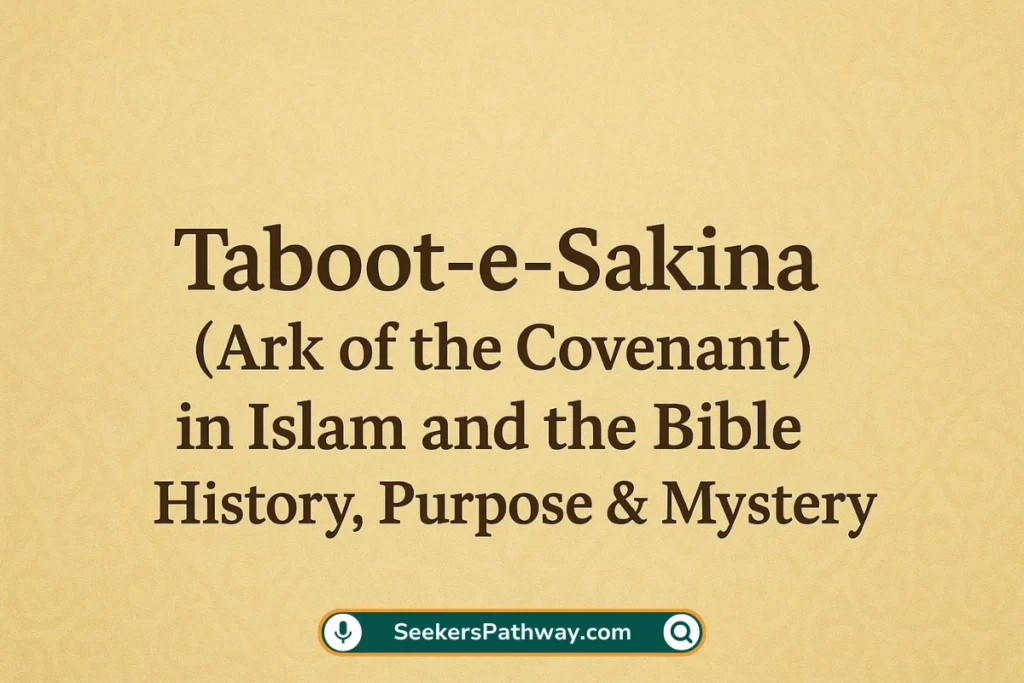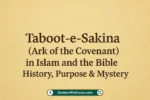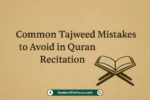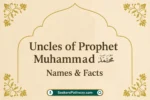The Taboot-e-Sakina, also known as the Ark of the Covenant, was a sacred chest given by Allah to the Children of Israel. According to Islam, it contains holy relics from the family of Prophet Musa (Moses, عليه السلام) and Prophet Haroon (Aaron, عليه السلام). The Qur’an describes it as a source of sakina (peace and tranquility) and a divine sign of leadership and victory. In Christianity and Judaism, the Ark of the Covenant served a similar purpose, holding the Ten Commandments, Aaron’s rod, and manna.
Both terms—Taboot-e-Sakina in Islam and Ark of the Covenant in the Bible—refer to the same sacred object that symbolized God’s presence and mercy.
Taboot-e-Sakina in the Qur’an
The Qur’an clearly mentions the Taboot e Sakina in Surah Al-Baqarah (2:248):
“Indeed, the sign of his kingship is that the chest will come to you in which is tranquility from your Lord and remnants of what the family of Musa and the family of Haroon left, carried by the angels. Surely in that is a sign for you if you are believers.”
This verse highlights three key points:
- The chest brought sakina (peace and reassurance).
- It contained relics from Musa and Haroon.
- Angels delivered it as a miraculous sign for Bani Israel.
Thus, in Islam, the purpose of Taboot-e-Sakina was to strengthen faith, prove true leadership, and bring divine victory.
Taboot-e-Sakina History and Purpose
Taboot-e-Sakina History in Islam
- It was given during the time of Prophet Musa (AS).
- It symbolized Allah’s support, mercy, and leadership.
- Whenever carried in battles, it brought victory to Bani Israel.
- When they lost it, they suffered defeat and despair.
Ark of the Covenant in the Bible
In the Bible, the Ark of the Covenant is described in the Book of Exodus. It was made of acacia wood, covered in gold, and placed in the Tabernacle Ark of the Covenant (the portable sanctuary). It held:
- The stone tablets of the Ten Commandments.
- Aaron’s staff.
- A pot of manna.
Thus, both traditions agree that this sacred chest was central to the faith and guidance of God’s chosen people.
Where is Taboot-e-Sakina Now?
Many people ask: “Where is Taboot-e-Sakina now?” or “Who has Taboot-e-Sakina now?”
Islamic tradition does not provide a clear answer. Some narrations suggest it was lost and later returned by angels during the time of Prophet Talut (Saul). After that, its fate remains unknown.
The Bible also raises this mystery—before the destruction of the Temple of Solomon, the Ark of the Covenant was hidden, and no one knows its exact location. Some claim it is in Jerusalem, while others suggest Ethiopia.
So the truth remains: Is Taboot-e-Sakina found? No, its location is known only to Allah.

The Symbolism of the Ark of the Covenant
The Ark of the Covenant in Arabic is Taboot-e-Sakina. Its spiritual role was greater than its physical one:
- It symbolized Allah’s mercy.
- It brought sakina (peace and reassurance).
- For Christians, some view it as a symbol of Jesus (عليه السلام). They ask: “How does the Ark of the Covenant symbolize Jesus?”—since both carried divine guidance.
- In Islam, however, it is strictly a sign of Allah’s support to Bani Israel, not linked to later interpretations.
The Mystery of the Real Ark of the Covenant
People often search for the real Ark of the Covenant or even claim to have real pictures of the Ark of the Covenant. Similarly, many look for a Taboot-e-Sakina real photo.
The truth: there are no authentic images or photos. Any “real pictures” online are either symbolic art or fabricated. Islam teaches that faith in the unseen is more important than physical evidence.
Comparison of Taboot-e-Sakina in the Qur’an and Ark of the Covenant in the Bible
| Aspect | Taboot-e-Sakina in Qur’an (Islam) | Ark of the Covenant in the Bible |
|---|---|---|
| Name | Taboot-e-Sakina (Chest of Peace) | Ark of the Covenant |
| Mentioned in | Surah Al-Baqarah (2:248) | Exodus, Kings, Chronicles |
| Meaning | Symbol of tranquility and faith | Symbol of the covenant between God & Israel |
| Contents | Relics of Musa & Haroon | Ten Commandments, Aaron’s staff, manna |
| Purpose | Divine sign of victory & leadership | God’s presence & covenant reminder |
| Who carried it? | Angels delivered it | Priests carried it in battles |
| Current status | Lost – Allah knows its place | Lost – believed hidden before Temple destruction |
| In Arabic | Taboot-e-Sakina | تابوت العهد (Taboot al-‘Ahd) |
Frequently Asked Questions (FAQs)
Q1. What is Taboot-e-Sakina according to Islam?
It was a sacred chest containing relics of Musa and Haroon, a divine sign of sakina (peace) and victory.
Q2. Is Taboot-e-Sakina found today?
No, it is not found. Its exact location remains a mystery.
Q3. Where is Taboot-e-Sakina now?
Its current location is unknown. Only Allah knows where it is.
Q4. What is the Ark of the Covenant in Arabic?
It is called Taboot-e-Sakina or Taboot al-‘Ahd.
Q5. What is the purpose of the Ark of the Covenant?
To symbolize God’s presence, strengthen faith, and bring peace and victory.
Q6. What happened to the Ark of the Covenant?
It was lost or hidden before the destruction of the Temple of Solomon.
Q7. Where is the Ark of the Covenant now?
Some traditions say Jerusalem or Ethiopia, but there is no proof.
Q8. Are there real pictures of the Ark of the Covenant?
No, only illustrations exist. No real photo has ever been found.
Q9. How does the Ark of the Covenant symbolize Jesus?
Christian interpretation links it to Jesus as both carried divine guidance, but Islam does not make this link.
Q10. Who has Taboot-e-Sakina now?
No one has it today. It is hidden by the will of Allah.
The Taboot-e-Sakina (Ark of the Covenant) is one of history’s greatest mysteries. Both Islam and the Bible describe it as a sacred chest holding divine relics and symbolizing God’s mercy and guidance. Though people wonder “Where is the Ark of the Covenant now?” or search for a Taboot-e-Sakina real photo, the truth is that it remains hidden.
What matters most is not its physical presence but the lesson it teaches—that true tranquility (sakina) comes from faith, obedience, and reliance on Allah.










